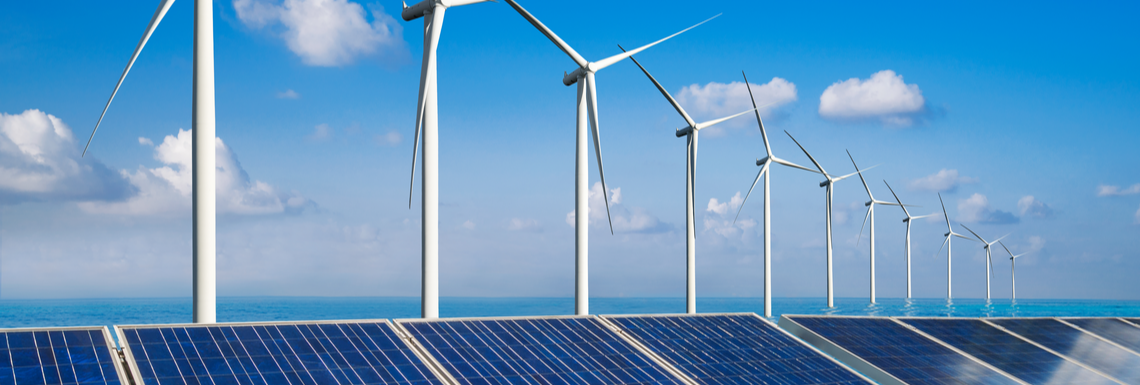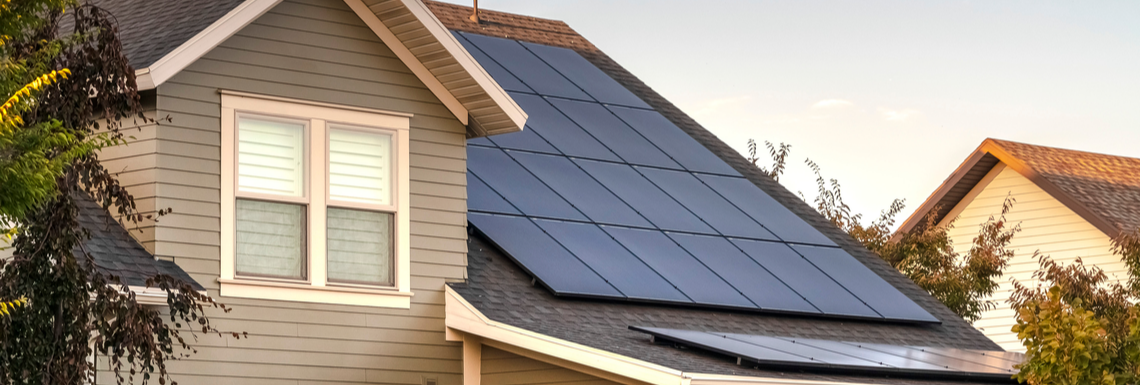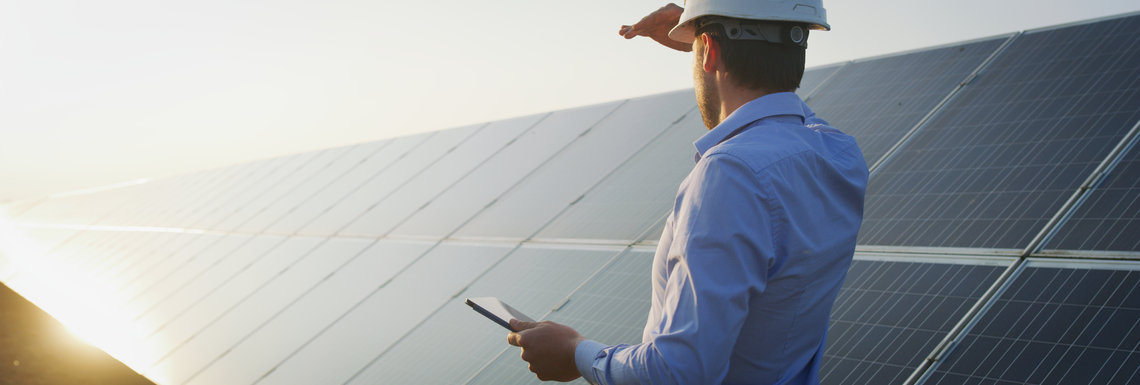Photovoltaic Panels – the Leaders of Renewable Energy
The response to some of the issues arising primarily from fossil fuel-based economies is renewable energy sources. They are being more and more supported and promoted by legislation as well as both EU and national programs affecting everyone – local governments, business entities and consumers. This is combined with climate-oriented targets declared in multiple plans, documents and strategies adopted by European Union member states. The support system created in the RES Act resulted mainly from Poland’s need to fulfil climate obligations, which provide for 15% share in the total gross energy consumption already in 2020. The Central Statistical Office’s data show that in 2019 this ratio slightly exceeded 12%, which means there is still a long way to go for Poland to achieve the ambitious target of climate neutrality in 2050. This means that the development of alternative energy sources will be supported to an even wider extent by government agendas.
Advantages of RES

Renewable energy sources (RES) enable us to effectively fight air pollution but this is not their only strength. Building a RES-based electrical power system provides an opportunity to increase energy security and become independent of other countries due to distributed location of strategic facilities, which are power plants, and due to lower dependence on imports of energy and conventional fuels.
As RES do not need conventional fuels, they are invulnerable to their price volatility on commodity markets, which means greater stability of power prices once greater RES share in the overall energy mix is reached. This also anticipates the decreasing cost of power in the future. Some countries already benefit from energy generated by RES at a cost lower than power coming from conventional fuels.
It is, as well, worth noting that given the growing demand for energy, it is difficult to construct new conventional sources within a short period of time, while building a photovoltaic farm is a matter of several months. One should also remember about individual prosumers, who form a virtual dispersed power plant, which daily generates huge amounts of electrical power.
Energy generated by photovoltaic panels or wind plants does not require such significant investment efforts as conventional energy and, what’s more, it also boasts slim operational costs.
Among Poland’s RES, the dominant ones are wind and sun energy – commonly regarded as uncontrollable. However, this problem is being mitigated by the development of energy and
storage technologies and financing systems as well as by skilful balancing of the energy mix with controllable renewable energy sources, such as biogas plants, posing a vast potential.
The benefits of RES, and of photovoltaic panels in particular, have been noticed primarily by individual prosumers, who each month may see significant savings on their power bills and given the current support system they may expect reaching the return on the investment in a model installation already after about five years.1 This trend will gain strength along with the development of the energy storing market and finally, prosumers will be able to cut their energy bills to a minimum and become even more independent of the power from the grid and of the growing energy prices.
The growth of photovoltaic

Popularity of photovoltaic panels, for individual and commercial use, is continuously growing. This is reflected by the data of the Polish Central Statistical Office, which show that among RES technologies, PV is driving the power capacity growth. In 2019 the total installed capacity nearly tripled, and generated power nearly doubled when calculated on a year-to-year basis.
Such dynamic demand is owed to the developing technology and its continuously dropping prices, legislative support, multiple system installation options (roofs, garden shelters, ground, etc.) and availability of attractive financing, both commercial and preferential (regardless of the customer segment).
Photovoltaic panels are now the most popular among individual clients and commercial entities producing energy for sale. In the face of the growing energy prices, resulting mainly from the cost of carbon dioxide emissions2 and the pressure from the consumer market, financial paths and legislation (taxonomy, ESG, etc.), also business entities are starting to take into account the benefits of building PV installations to produce power for own needs.
Entrepreneurs interested in green energy and development of their businesses towards the “green company” format have at their disposal various business models, which those gaining the most popularity are the following:
- ESCO, or energy services company. In this model the system is deployed and financed by an external entity on the premises/ building of the entrepreneur. The ESCO guarantees a certain level of savings versus the current costs. The entrepreneur shares the generated savings with the energy services company until the investment is fully repaid. Afterwards, the system becomes fully owned by the entrepreneur and for the following years it generates savings in electricity costs. The responsibility for the entire system lies ultimately within the ESCO.
- PPA, or power purchase agreement, is a type of a long-term contract for the purchase of power by the entrepreneur directly from the producer, regardless of the location of the installation. PPA provides for a situation where the installation owner builds a power plant on the premises of the entrepreneur and the entrepreneur pays only a fixed price for the energy consumed. However, the installation is not owned by the entrepreneur at any time. The responsibility for the system lies ultimately within the selling entity.
- Purchasing power in the market – concluding an agreement with a distributor solely for consuming energy generated by RES, confirmed by a relevant certificate of origin. The responsibility for the system lies fully within the selling entity.
In some circumstances, the most economic option will be to follow the classic approach – buying and installing a PV system, which remains the buyer’s property. Such a solution allows the owner to benefit from the generated savings from the very first day of activating the system. One must remember that in this case, the entrepreneur bears full responsibility for the system – maintenance, insurance and acquisition of financing. Here, these are the available forms of financing:
- Entrepreneur’s own funds;
- Banking products such as loan, leasing or green bonds – commercial debt financing, including a number of favourable products of BOŚ Capital Group, designed for each customer segment;
- Programs of the National/ Voivodship Fund for Environment Protection and Water Management (NFOŚiGW/WFOŚiGW) or regional programs – preferential debt financing or non-refundable financing; the program, the donor and financing levels depend on the RES system type, purpose of the system, type of beneficiary and the region.
The entrepreneurs who are willing to invest in additional commercial operations and power generation for sale should also consider the auction system. It provides for building your own photovoltaic farm and earn a fixed rate for the sale of power returned to the grid. For entrepreneurs, the profitability of the RES systems must be calculated on an individual basis, primarily due to prices of the purchased energy which may vary significantly among the business entities.
When choosing the system with full ownership, one must remember that its profitability will grow along with the power consumption for own purposes. Hence, it is so important to properly scale the system size and capacity. In some cases, it may be economically justified to combine a PV system with an energy storage solution.
Green future

To sum up, it is worth stressing that the development of RES, including the most dynamically developing photovoltaic technology, provides for achieving one’s goals on several levels – from direct economic and reputational benefits and satisfying the power demand of the user/ investor, through accomplishment of national and international policies, to purely environmental benefits, which are becoming more and more vital.
We all may contribute to the sustainable development, with RES as its component, becoming everyone’s daily reality. And on the optimistic note – the colour of the future seems to be green.
Prepared by BOŚ Bank.
1www.globenergia.pl/po-ilu-latach-zwroci-się-fotowoltaika-analiza-redakcyjna
2(UE ETS – Emissions Trading Systems; ponad 8 krotny wzrost ceny od 2015 roku).




